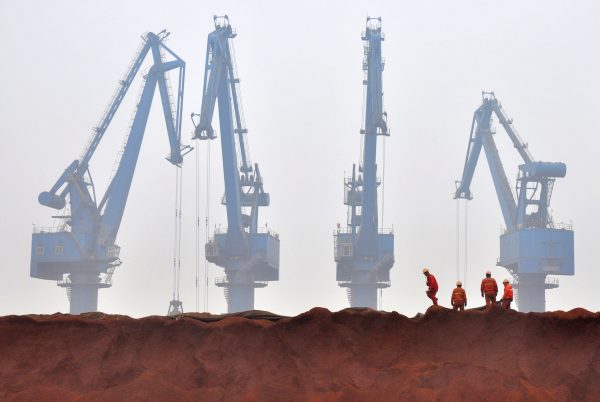A 2019 poll by the Lowy Institute shows that 68 per cent of respondents think that the Australian government is allowing too much investment from China. But at the end of 2018, China accounted for just 1.8 per cent of Australia’s total stock of foreign investment — the ninth biggest investor economy. Investment from the United States is almost 15 times the size of Chinese investment in Australia (AU$939.5 billion versus AU$63.6 billion, respectively); investment from Belgium is almost five times larger than that from China (AU$316.9 billion) and investment from Japan is almost four times larger (AU$229.3 billion).
But Chinese investment is visible. Mining, agriculture, telecommunications, infrastructure and real estate investment proposals from Chinese companies are covered prominently in the business sections of Australian papers. Sensationalised headlines about ‘Chinese juggernauts’ and ‘toxic investment’ tar over the huge diversity of Chinese investors and their motives with automatic suspicion and anxiety.
The tarring of all Chinese investment deserves unpacking as it has significant implications for one of Australia’s most important bilateral relationships and its long-term economic prosperity. In 2018, Australian goods exports to China accounted for AU$4733 per Australian (almost 20 per cent more than Indonesia’s GDP per capita), helping to make China Australia’s largest two-way trading partner.
The toxic narrative surrounding Chinese overseas investment draws on the idea of ‘China Inc’. This oversimplified narrative focuses on China’s state-owned enterprises’ (SOEs) ties to the Communist Party and its geo-strategic motives, along with SOEs’ ability to access cheap money. This oversimplification creates a monolithic image of China’s economic activities. But in reality, state influence in Chinese businesses is complex and constantly changing.
To understand the reality of Chinese state influence over its businesses and the flow-on effects, a granular look at the industry is required. In some cases, the unique operating environment of individual companies must also be scrutinised. The complexity of Chinese investment and the flow-on impacts of state-ownership on market outcomes was revealed by Asialink Business research investigating the impact of Chinese state-backed investment during the iron ore boom.
In the shadow of the global financial crisis and the booming iron ore price, the Chinese government provided support to expand supply mainly through its state financing institutions in the form of project financing, insurance and information. But increasing the access of Chinese investors to state capital — to which foreign competitors do not have direct access — could have reduced non-Chinese competitors’ ability to compete for market access on commercial terms.
Two questions stand out in particular. Did Chinese state support through low-cost capital provide ownership advantages for Chinese iron ore investors over their foreign competitors? And did the access to state support for Chinese investors reduce opportunities for non-Chinese iron ore investors and procurers to compete on commercial terms?
Asialink Business’ analysis of Chinese iron ore procurement arrangements showed that state-owned financing institutions were involved in the majority of investments and that most investments were undertaken by central and provincial SOEs in concert with non-Chinese partners. Chinese investors in iron ore during the boom did receive access to cheap state capital that was not available to major competitors in the market, violating competitive neutrality. Paradoxically, access to cheap state capital created opportunities for non-Chinese fringe players to partner on projects, reducing barriers to entry and increasing competition in the market.
Chinese iron ore investors were most often operating outside their core competency — usually steel production — and lacked technical expertise to develop and operate the projects. The lack of iron ore development and operating competence meant that Chinese investors with access to state capital generally partnered with a non-Chinese specialised iron ore fringe producer. This approach by Chinese investors lowered the barriers to market entry for non-Chinese fringe iron ore miners. This is what happened with Fortescue, which was founded in 2003 and is now the fourth largest iron ore producer globally.
Asialink Business also analysed a sample of 50 iron ore procurement arrangements to assess the claim that given the strong link between state and procurer, Chinese investment could lock up supply of a strategic resource. The analysis showed that instead of locking up resources, China’s iron ore procurement arrangements broadened the competitive global-supply base and increased access to iron ore for other buyers in the Asian market.
Chinese foreign investment trends in iron ore are different to those in infant formula, real estate, agriculture, and telecommunications. But trends Chinese investment trends relevant to the iron ore boom do reveal the complexities go beyond the ‘China Inc’ narrative.
From 2017 to 2018, Chinese FDI flows to Australia dropped 36 per cent. During this period, flows to the United States dropped 80 per cent, and global FDI flows fell 13 per cent. As the tide of global capital recedes, global competition for FDI will intensify. And if Australia doesn’t nuance the discussion around opportunities and threats inherent with foreign investment, investors will give us a long-overdue reality check.
Luke Hurst is Director of Research and Information at Asialink Business, Melbourne.


You are wrong! With China’s actions in the years since Xi came to power, Australia has every reason to be wary of China.. in every way. China steals intellectual property… and brags about it. China exceeds International limits on sea ownership in the SCS, even after losing it’s arguments to the World court.China exports propaganda… acknowledged in the EAF… via tourists and students. China is a ‘bad actor’ as the new lexicon would say, and until that changes, Australia is the most vulnerable.